How Anxiety Affects the Body: 25 Symptoms of Anxiety and Panic
Photo by Naomi August on Unsplash
Your fingers start tingling, your brain feels foggy, and your shoulders begin to ache. What’s going on?
You might be experiencing the physical symptoms of anxiety or panic.
When your body starts reacting out of the norm or for no reason you can figure out, that can be a scary experience. I want to help you understand how your body is responding so you can take your life back from anxiety, instead of feeling controlled by it.
Debunking Anxiety Symptoms
Many people know about common anxiety symptoms, such as feeling restless or being overwhelmed by worry. But there are many changes your body can experience that may seem baffling in the moment.
Most people’s struggles with anxiety stem, in some part, from a lack of understanding. This lack of knowledge is understandable because most adults didn’t get a class on emotional intelligence in elementary school. And a lot of us grew up in households where emotional expression might have been a foreign concept.
Understanding why we experience anxiety, how our bodies respond, and how to reverse the symptoms more quickly can help us feel in control.
The Causes of Anxiety
First, it’s important to know that anxiety and panic are not harmful in the short-term. Anxiety is a completely natural experience. We need our anxiety.
Anxiety exists to protect us from threats and prepare us for what might come. Anxiety also motivates us. If you couldn’t feel anxiety, you wouldn’t spend hours studying for your exam or practicing for your presentation at work. If we couldn’t experience anxiety, we’d be in a perpetual state of boredom and we wouldn’t be able to get ready for life’s challenges. Research has shown that having the optimal level of anxiety actually enhances performance.
Why Do I Feel Anxious?
When your brain recognizes something as a threat, anxiety kicks in to help prepare you to react to that danger. It’s important to note that the threat does not have to be real. Anxiety can be triggered when you only think that something is dangerous. Your brain might create an association with a harmless trigger for various reasons such as past trauma, phobias, or unconscious connections to a physical change in your body.
For example, experiencing panic attacks in the middle of the night is quite common. We don’t know one exact cause for this. Your body may be overly tense from anxiety during the day, making you more prone to a panic attack. Or your body may have created an association with a physical symptom you experience when anxious, such as your temperature dropping. It might then interpret that symptom as a sign of danger. Let’s imagine that your air conditioner turns on while you’re sleeping and your body becomes colder. Your brain might interpret that as a sign of danger and jump start your system into a panic attack.
Once your mind has noticed a trigger, it can set off a variety of physical changes throughout your body.
Physical Symptoms of Anxiety or Panic
Heart racing/palpitations
Chest pain
Muscle tension
Soreness
Headaches
Difficulty sleeping
Trouble concentrating
Fatigue
Sweating
Stomach upset/nausea/vomiting
Diarrhea
Shortness of breath
Dizziness/Feeling unsteady/Lightheadedness/Feeling faint
Numbness or tingling, especially in your hands and feet
Shaking/trembling
Blurred vision or sensitivity to light
Chills or hot flashes
Feeling surreal, weird, or, off called “derealization”
Depersonalization or having an out of body experience
Feelings of choking
Feeling like you’re losing control or going crazy
Feeling like you’re going to die
Frequent urination
Difficulty relaxing, feeling keyed up, or restless
Dry mouth (Barlow, 2021)
Anxiety and The Nervous System
Why is it that your body experiences such strange symptoms as feeling faint or tingling when it perceives a threat? When your brain registers this threat, it sends signals to your autonomic nervous system. Your nervous system is actually comprised of 2 systems: your sympathetic nervous system, and your parasympathetic nervous system.
These 2 systems are in charge of controlling your body’s energy levels and ability to spring into action. The sympathetic nervous system turns on your fight or flight response. The parasympathetic nervous system is responsible for bringing your body back to its normal resting state.
You can think about your sympathetic nervous system as the gas and your parasympathetic system as your brake. Activation of the sympathetic nervous system, or the gas, is what causes those strange and confusing symptoms.
Activation of the System
The sympathetic nervous system releases adrenaline and noradrenaline as messengers to trigger different parts of your body. Each symptom of anxiety or panic listed above is intended to prepare you for incoming threats.
Changes in Heart Rate and Blood Pressure
When your heart rate rises and your blood pressure increases, your nervous system is preparing you for action by speeding up your blood flow and increasing oxygen to your muscles. Your muscles need this oxygen to give you energy to flee or fight the perceived danger.
Changes in Blood Flow
Your body also redirects blood flow from areas where it isn’t needed in immediate danger (such as your skin, fingers, and toes) to areas where it is more useful (the larger muscles like your thighs and biceps). In the distant past, when we faced threats such as wild animals, our hands and feet were more likely to be attacked. Having less blood flow in these extremities meant we were less likely to die from blood loss. This change in blood flow is responsible for symptoms such as numbness or tingling in your hands and feet, or pale, clammy skin.
Breathing Changes
In a crisis, the we need to breathe faster and deeper to receive more oxygen to power those large muscles that we need to protect ourselves. Sometimes this reaction can cause an imbalance in your breathing. This can lead to uncomfortable but harmless symptoms such as a feeling of choking, shortness of breath, and pain or tightness in the chest. This may also lower the supply of blood to your head, which can cause similarly uncomfortable but harmless symptoms such as confusion, blurred vision, dizziness, feeling faint, or a surreal, dream-like feeling called derealization.
When experiencing anxiety, many people may feel lightheaded and fear they will faint. However, fainting is more likely to happen to people who have low blood pressure. While your sympathetic nervous system is activated, your blood pressure is likely to rise, making fainting a rare occurrence with anxiety and panic.
Muscle Tension
When you are feeling anxious or panicked, your muscles tense so you can defend yourself quickly. This muscle tension can lead to headaches, body pain, and trembling. This can also lead to trouble sleeping or relaxing because it’s hard to unwind when your body is tense.
Digestive System Changes
The digestive system also takes a hit. Energy is shifted away from the digestive system to redirect it to your larger muscles. This may lead you to feel nausea, or experience diarrhea and/or vomiting. This might also decrease salivation which can lead to dry mouth.
Changes in Temperature
If you feel a quick rush of heat, that is more likely to be a symptom of panic. This usually occurs in the immediate peaking of your panic, before your blood flow has been changed. Cold chills are more likely to occur with anxiety that builds slowly.
Other Physical Symptoms of Anxiety
Sweating is a common symptom of anxiety as it cools the body to prevent you from over-heating and makes you slippery, and therefore more difficult to grab onto by an attacker. Your pupils might get bigger to allow you to better see your environment. This can lead to blurred vision, spots in front of your eyes, or sensitivity to bright light.
At the end of this massive shift in energy, it is natural for you to feel exhausted or drained. General fatigue is a common sign of anxiety (Barlow, 2021).
Does Anxiety Go Away?
Your parasympathetic system is designed to bring your body back to neutral and other chemicals in the body eventually destroy adrenaline and noradrenaline. Because of this, the state of anxiety or panic can’t continue forever or spiral out of control. It can take time for adrenaline and noradrenaline to be fully destroyed and your nervous system response can fluctuate even after the danger has passed, so you might continue to feel restless or on edge. This is also a natural response so your body can be primed for the return of danger, if necessary. This feeling will pass.
Being able to understand the physiological changes in your body can help you calm yourself and identify what is really happening when you’re experiencing anxiety or panic. These symptoms can feel terrifying, but it is important to remind yourself that they are not harmful or permanent. They are a sign of your body’s steps to keep you safe.
How to Deal with These Physical Symptoms
A good way to cope with your anxiety or panic is to begin objectively monitoring your experience. You can do so in the moment. For example, instead of saying “I feel awful,” try noting what is physically happening in your body, such as “my heart rate is increasing, my temperature is rising.” This objective way of monitoring can give you some distance from the intensity of the experience so you don’t get caught up in your body’s process.
You can also begin to regularly track these symptoms after the fact, daily or weekly depending on your need. Tracking can help you spot patterns and understand triggers for your anxiety or behaviors that might make you feel more anxious.
Once you begin to understand your personal, physical reactions to anxiety, you can learn to better regulate your body and engage in consistent self-care to keep your stress levels manageable.
Anxiety is uncomfortable, but not dangerous, so you will want to start working on facing your fears so you can teach your brain that your triggers are not dangerous. But that can be hard on your own. Once you’re ready to face your fears, that can be a great time to reach out for help.
Getting Help
I recommend anyone experiencing these symptoms to first get a full medical evaluation to check for any possible physical causes. If your doctor has told you there are no physical causes that can be identified, you may be experiencing an anxiety disorder such as Generalized Anxiety Disorder, Social Anxiety Disorder, or Panic Disorder.
Anxiety Treatment in Glendale and Virtual in California
I specialize in the treatment of anxiety for adults. If you’d like to learn more about how to stop the painful cycles of chronic worry or frequent panic attacks, contact me.
Craske, M. G., & Barlow, D. H. (2006). Mastery of Your Anxiety and Worry: Workbook (Treatments That Work) (2nd ed.). Oxford University Press.
Barlow, D. H. (2021). Mastery of Your Anxiety and Panic: Fourth Edition: Workbook (Treatments That Work) by David H. Barlow (2007–01-11). Oxford University Press.
The information above is provided for informational purposes only. Assessment and treatment should always be directed through a one-on-one consultation with a trained professional. I am not liable or responsible for any damages resulting from or related to your use of this information.


